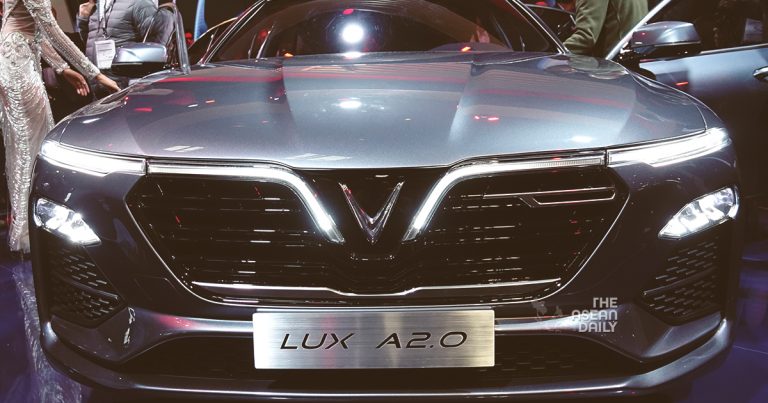16-8-2023 (HANOI) Vietnam’s electric vehicle (EV) pioneer, VinFast, has made a splash with its Nasdaq listing, achieving a valuation of over $85 billion, nearly double the value of established giants Ford and General Motors. However, the real test lies ahead – achieving robust growth in international markets.
VinFast faces the daunting task of more than doubling its current year-to-date sales within the next five months to meet its ambitious annual target of selling 50,000 EVs. To accomplish this, the company plans to reshape its sales strategy, transitioning from selling solely through its platform to collaborating with distributors and dealerships, a shift influenced by Tesla’s approach.
Success also hinges on cost optimization to be competitive in pricing against rivals like Tesla, which has leveraged economies of scale to cut prices and intensify competition in the EV market.
VinFast’s shares, merged with a special purpose acquisition company (SPAC) called Black Spade, enjoyed a robust debut on Nasdaq. However, given that 99% of the company remains under the control of founder Pham Nhat Vuong, the limited public float renders the stock susceptible to increased volatility.
Notably, other EV-focused SPAC deals have witnessed a decline in share prices post-listing, exemplified by Lucid, the foundation of Black Spade’s initial $23 billion valuation for VinFast. Lucid’s value has plummeted to under $15 billion, marking a nearly 40% decline from its $24 billion SPAC valuation in 2021.
VinFast’s intention to secure additional capital could pose a challenge to its current high valuation. CFO David Mansfield indicated that the company is engaging with various investors, including sovereign wealth funds, with plans to raise further funds within the next 18 months. However, the market will ultimately dictate the terms of this investment.
The Nasdaq listing also provides VinFast an avenue to offer share-based compensation, aiding in retaining senior executives, an area where the company has faced challenges.
Navigating Overseas Growth Challenges
VinFast’s CEO, Le Thi Thu Thuy, announced a shift in the company’s sales model towards a “hybrid model” involving distributors and dealerships for overseas markets. While the original strategy was centered around exclusive showrooms like Tesla, the new approach aims to accelerate expansion through partnerships.
Acknowledging the slower pace of opening exclusive showrooms, Thuy stated, “Joining forces with other partners to go faster has always been our nature.” As of June, VinFast operated 122 showrooms globally, primarily on the U.S. West Coast.
Founder Pham Nhat Vuong, who previously stated a goal of selling 50,000 EVs in 2023, reaffirmed the company’s target. Currently, VinFast has sold over 16,000 units in the first seven months, including sales within Vietnam. However, this figure includes only 137 units of the VF8 model sold in the United States, the sole model offered there currently.
CFO Mansfield noted that the company remains on track to achieve the chairman’s projection for the year. Despite this, VinFast’s sales target would still represent just a sixth of its Haiphong, Vietnam plant’s production capacity. The company’s expansion plans include a new plant in North Carolina scheduled for operation in 2025.
Consultancy firm AlixPartners suggests that EV manufacturers need annual sales of around 400,000 vehicles to break even, particularly considering the fierce competition in China’s price-driven EV market.
Moreover, pricing poses a significant challenge. Tesla’s continuous pressure on competitors was exemplified by its recent introduction of a more affordable version of the Model S and Model X. The Tesla Model Y, with federal subsidies considered, is nearly $7,000 cheaper than VinFast’s VF8 model.
VinFast’s CEO, Thuy, expressed confidence in the company’s competitive pricing but emphasized the ongoing efforts to reduce costs. She highlighted Vietnam’s cost advantages, stating, “There is no other (automaker) in the world that has as low a cost base as in Vietnam… All of that is leading to cost reduction in the future.”




